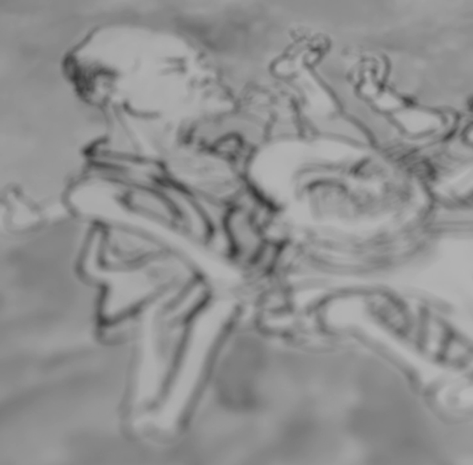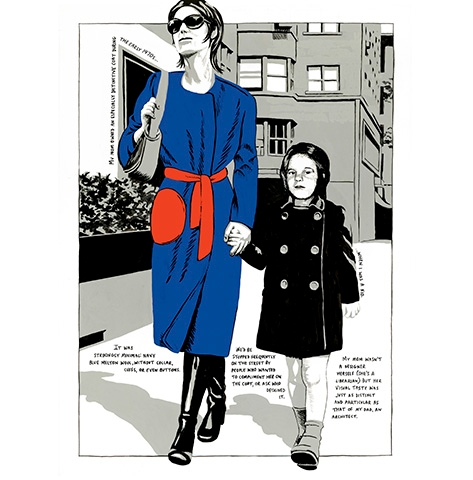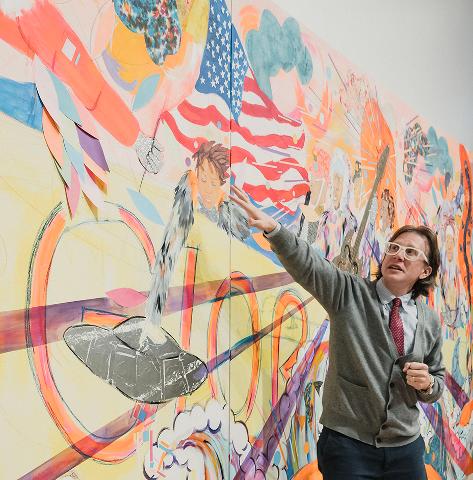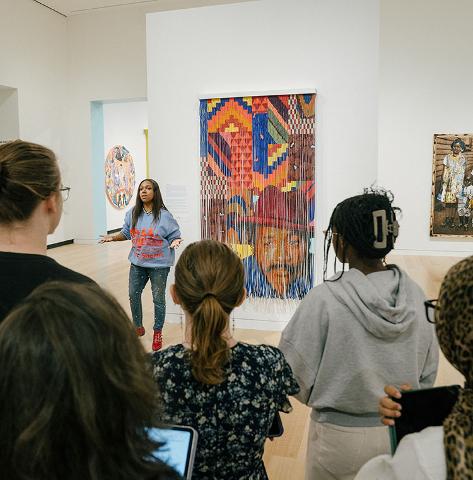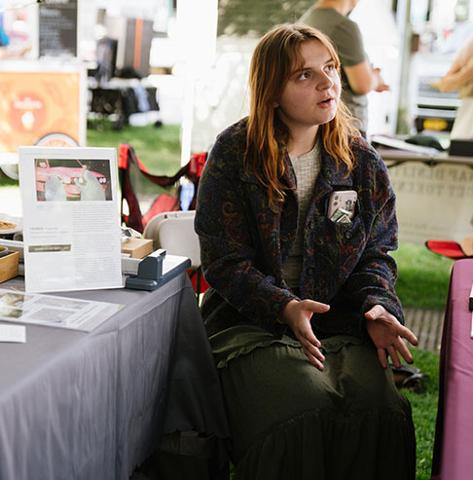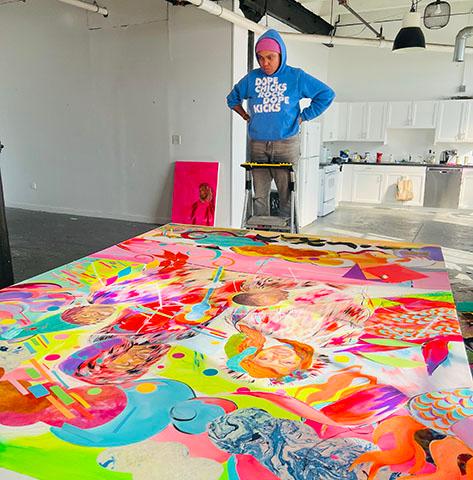Janelle Rodriguez
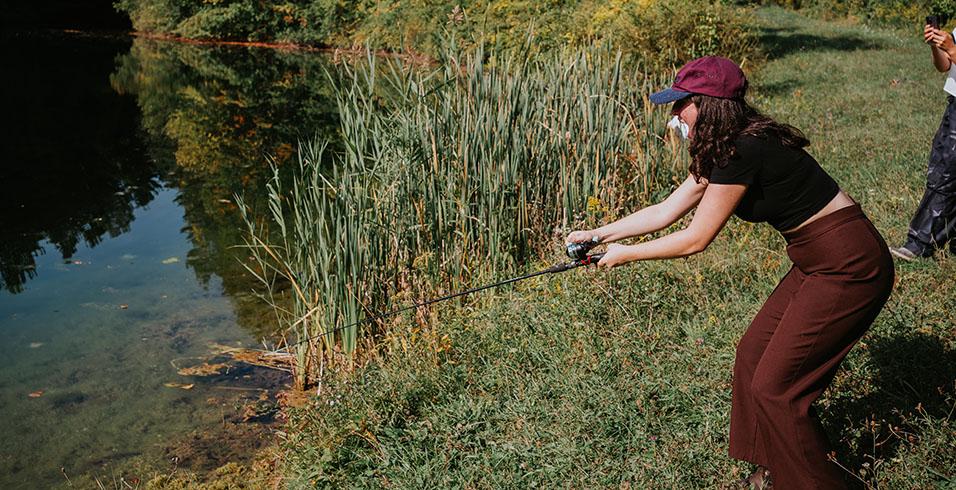
Artist Alexa Hatanaka spent three days on campus in September, engaging with the Wellin's audiences and inspiring students. Her public gallery talk packed the exhibition gallery, as she discussed her sculpture Koinobori (eggs in the belly) with Menagerie exhibition curator Dr. Elizabeth Shannon. The sculpture, created using original paintings and prints on washi paper and repurposed materials sewn together, resembles the carp kites flown in Japan on Children's Day, enlarged to a spectacular nine feet. She shared insights into the processes involved and the many inspirations for her work, from the rice bags that her father would save for her to the snowy Canadian landscapes depicted on the piece and the print of an abstracted cat's head that she originally designed as a young girl in an art museum program. The most fascinating detail, some might say, are the prints of actual fish that adorn the large fish sculpture.
To delve further into Hatanaka's work, the Wellin coordinated a fishing excursion to Hamilton's reservoir, collaborating with fishing expert Acee Acee to explore the process of creating prints from fish in the Japanese tradition of gyotaku. For some staff and students, this was their first fishing experience, while others were old hands. Among the students participating were Wellin Museum docents and members of professor Bhen Alan's Introduction to Printmaking course. Professor Alan's class then used the fish in the traditional gyotaku process, which involves applying ink to the fish and pressing paper onto it to create a print that captures the contours and textures of the animal.
Alexa Hatanaka also engaged with several other Hamilton classes, providing critiques to students in Professor Brener's Junior and Senior Art seminars. She also led a discussion with students in Professor Kropps's environmental studies course Changing Arctic Ecosystems, highlighting the interdisciplinary threads in her work.
Hatanaka's visit also inspired future educational programming. In Spring 2025, the Wellin Museum will host a Wellin Kids session that incorporates gyotaku, albeit not using real fish. Education assistants are currently researching and testing printmaking techniques using rubber fish for this program. We hope to celebrate the spirit of the technique while creating a fun, educational atmosphere for families.
Hatanaka also sat down with the Collection magazine team, a group of Wellin student employees who write and publish the museum's student-led magazine. Her interview will be published in the December, 2024 edition of Collection.


